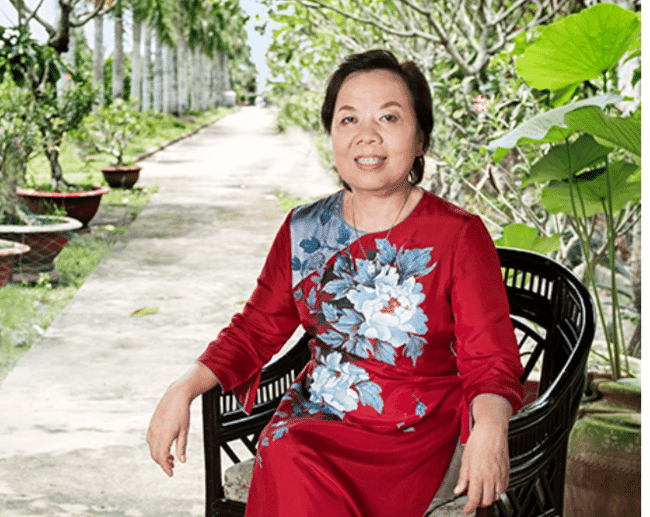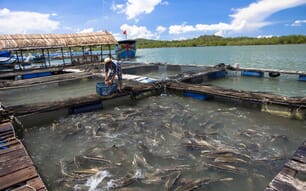
© Vin Hoan
The Vietnamese firm, which was founded by Truong Thi Le Khanh, who still operates as chairwoman of the board, was shown to be something of an anomaly amongst the top 100 seafood companies in the world, as she is supported by a majority of women on the board (10 out of 12 members).
The research, conducted by the Women in the Seafood Industry (WSI) showed that women may only make up made up 14 percent of the top management (exec and non-exec) roles in these companies, yet this is highest level recorded since WSI undertook its first such analysis in 2016.
Meanwhile women make up only 4 percent of the CEO’s of the world’s largest seafood companies. This puts it on a par with the mining industry, while women make up even fewer CEOs in science, technology, engineering, and mathematics (STEM) based companies (3 percent) and oil & gas (1 percent).
As well Vin Hoan, companies run by women include Bumble Bee Foods and American Seafoods Group from the USA and Marusen Chiyoda Suisan from Japan.
Other key findings
- Over a third of all seafood companies analysed (28 out of 80) have an exclusive male board of directors.
- None of the 100 companies had an exclusive female board.
- No more than 5 percent of the companies (4 out of 80) have more than 40 percent women. The only instance with more than 50 percent women holding top management position is Vinh Hoan.
“Across 80 companies, comprising of 1,042 board directors, a mere 150 are women, i.e. 14.4 percent. This however still reflects progress compared to 2016 (sample analysed 71 companies) rate of 9.1 percent. To mark another improvement, the percentage of companies with less than 20 percent female representation on the board has declined from 81 percent in 2016 to 64 percent in 2019. That said, there seems to be a remarkable resistance in equality between men and women: no more than 5 percent companies recorded over 40 percent women in boards, exactly the same ratio as 2019,” Natalia Briceno-Lagos, WSI project manager, reflects.
Percentage of women holding corporate board seats
2016 |
2019 |
|
0 percent |
54 percent |
35 percent |
< 20 percent |
27 percent |
29 percent |
21 percent to 40 percent |
15 percent |
31 percent |
41 percent to 50 percent |
4 percent |
4 percent |
> 50 percent |
0 percent |
1 percent |
Source: WSI 2020 based on Undercurrent News Top 100 seafood companies 2019
Highest female participation in boards: Top seafood companies
percent women in boards |
|
Vinh Hoan (Vietnam) |
83 percent |
Zhanjiang Guolian Aquatic Products (China) |
47 percent |
Austevoll Seafood (Norway) |
40 percent |
Bumble Bee Foods (USA) |
40 percent |
SalMar (Norway) |
38 percent |
Labeyrie Fine Foods (France) |
38 percent |
Sanford (New Zealand) |
36 percent |
Sirena Group (Denmark) |
35 percent |
Grieg Seafood (Norway) |
33 percent |
Zoneco Group (China) |
32 percent |
Percentage of women in executive boards (by country)
Country |
Total board directors |
Number of women |
percent women |
Japan (18) |
381 |
18 |
5 percent |
Chile (6) |
99 |
8 |
8 percent |
Norway (9) |
91 |
25 |
27 percent |
China (5) |
63 |
18 |
29 percent |
Canada (2) |
56 |
15 |
27 percent |
Spain (7) |
50 |
7 |
14 percent |
Thailand (3) |
47 |
4 |
9 percent |
USA (9) |
43 |
6 |
14 percent |
UK (4) |
41 |
5 |
12 percent |
Denmark (6) |
36 |
9 |
25 percent |
Vietnam (2) |
22 |
11 |
50 percent |
Number of companies observed in parenthesis
Source: WSI 2020based on Undercurrent News Top 100 seafood companies 2019
“Interesting enough, the percentage of women in executive boards varies based on the total number of board directors per country. Japan, for instance, has 18 companies that are part of the top list, among them there are 381 board members, but only 18 are women, i.e. 5 percent. In the case of Chile, out of a total of 99 board members only 8 are women, i.e. 8 percent. In both countries, it’s likely that existing corporate cultures rooted in traditional cultural norms have made it difficult to incorporate women in top positions," says Briceno-Lagos.
“Norway, the first country to introduce a gender quota on boards of PLCs in 2003, has seen the participation of women dropping from 31 percent to 27 percent. Vietnam offers an astounding picture but only two companies are included in the sample," she adds.
Case of Norway: thanks to the mandatory quota
"In many regards, Norway leads the way in gender equality in the professional sphere in many regards. Thanks to a mandatory quota law introduced in 2003, the boards of its public companies must have at least 40 per cent female non-executive directors. The private limited companies in our sample below fully comply with the law. But what about the conspicuous unbalance in executive boards where no regulatory constraints?" Briceno-Lagos asks.
Company |
CEO |
Executive board (% women) |
Board of directors (% women) |
Mowi |
Male |
20 percent |
40 percent |
Austevoll Seafood |
Male |
33 percent |
43 percent |
SalMar |
Male |
17 percent |
57 percent |
Grieg Seafood |
Male |
20 percent |
60 percent |
Norway Royal Salmon |
Male |
0 percent |
50 percent |
Insula |
Male |
22 percent |
0 percent |
Source: Bloomberg, Companies’ websites
“In our sample of top seafood companies, the executive boards are far less gender balanced and not a company has chosen a woman for CEO. Is the sector failing to attract women or is it the result of a gender bias of the selection?," Briceno-Lagos asks.


